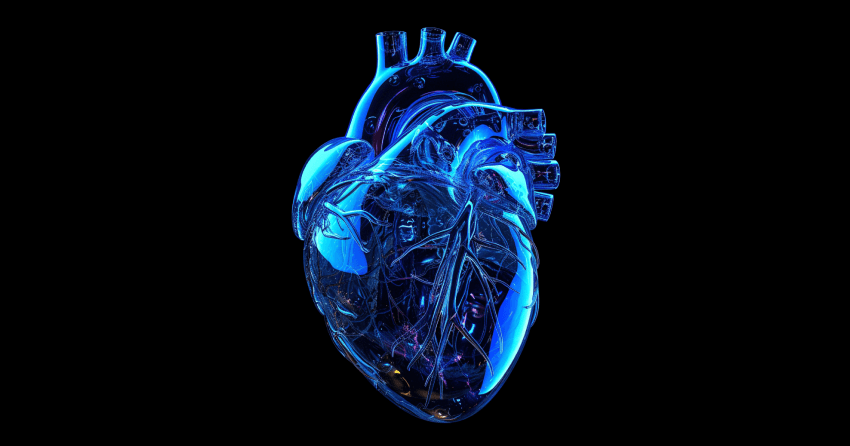Supporting Strong Hearts With Sirtuins: How a Decline in Two Sirtuin Proteins Affects Cardiac Function With Age

With only about half of the American adult population experiencing healthy heart function, many doctors and researchers are looking for ways to help support cardiovascular health in the other fifty percent of us. While lifestyle factors like nutrition, exercise, and stress management are often targeted as methods for preventing cardiac dysfunction, an up-and-coming area of research is how certain cellular components of the heart itself are changing internally as we age.
Two of these components are the mitochondria — our cells’ energy powerhouses — and the sirtuin proteins, which play a vital role in regulating cellular health and the aging process. In a recent study published in Aging Cell, a research team based out of the University of South Florida found that two of the sirtuins, SIRT1 and SIRT3, are highly involved in maintaining cardiac function, especially with advancing age or in response to stress. Authored by Zhang and colleagues, this illuminating study could open doors for potentially using these cardioprotective proteins as a therapeutic target for the half of America who currently struggles with supporting strong heart health.
How Sirtuins Support Heart Health
In addition to supporting cellular health, the sirtuin family acts as enzymes that repair damaged DNA, boost mitochondrial activity and function, increase antioxidant pathways, and respond and adapt to cellular stressors. Sirtuins are dependent on NAD+ (nicotinamide adenine dinucleotide) — a vital coenzyme needed by every cell in our body. However, NAD+ levels naturally decline with age, and the functioning of sirtuins declines right alongside it.
Although there are seven sirtuins, the two primary players linked to heart health are SIRT1 and SIRT3. These proteins protect cardiac muscle cells called cardiomyocytes from oxidative stress — the buildup of damaging molecules called free radicals or reactive oxygen species (ROS) — and manage how well the heart contracts.
These two sirtuins are also highly involved in mitochondrial function in the heart. While all cells need mitochondria to function, cardiomyocytes contain more energy powerhouses than other cells because the heart requires extensive energy to constantly pump blood throughout the body.
Due to these high energy demands, the sirtuins’ ability to support mitochondrial function and ATP (energy) production is a primary mechanism by which they protect the heart. However, this process becomes dysfunctional with age as sirtuin capacity declines. As the lead author of this study, Ji Li, Ph.D., professor of surgery in the USF Health Morsani College of Medicine, states of this process, "You need a strong presence of SIRT1 and SIRT3 to keep mitochondrial dynamics healthy in the heart. Otherwise, the heart's pumping function becomes weak."
The Impact of Ischemia-Reperfusion Injuries
In this study, Zhang and colleagues looked at how SIRT1 and SIRT3 activity affected cardiac function after both young and older mouse hearts were subjected to stress from ischemia-reperfusion (I/R) injuries. I/R injuries commonly occur after an event of reduced blood flow to the heart (like a heart attack, or ischemia). Then, a subsequent restoration of blood flow (“reperfusion”) can result in cardiac tissue damage, heart dysfunction, and increased mortality risk, especially in aged patients.
Although reperfusion is intended to be beneficial, this restoration of blood flow (and, with it, oxygen) can actually cause damage to the heart due to a surge of harmful ROS and inflammatory immune cells that exacerbate the heart’s injuries. Therefore, the research team is looking at the sirtuins as a target to protect the heart against these I/R injuries that are frequent causes of disability and mortality in older adults.
As Dr. Li reflects, “We started this study trying to understand why older people have a higher incidence of heart attacks than younger people, and why they die more often even if they receive maximum treatment. Younger people are much more likely to recover from heart attacks and less likely to suffer from ischemia-reperfusion injury." And, they believe that low sirtuin activity may be at the heart of these differences.

SIRT1 and SIRT3 Required for Healthy Hearts
As expected, the Florida-based research team found that the aged mice in this study had markedly lower levels of SIRT1 and SIRT3 than young mice. These low sirtuin levels then correlated with the aged mice experiencing dysregulated cardiomyocyte function and heart contractile abilities after stress from I/R injuries.
They also looked at how the hearts of mice fared after completely deleting SIRT1 and SIRT3 activity, finding that these mouse hearts were much more vulnerable to I/R stress than mouse hearts with the sirtuins intact. Plus, the SIRT-deleted mice exhibited dysfunctional cardiac mitochondria with damaged structures and membranes. Essentially, the young mice without SIRT1 or SIRT3 activity displayed cardiac and mitochondrial functions similar to that of aged mice.
If these results translate to humans, Zhang and colleagues are hopeful that boosting SIRT1 or SIRT3 activity in older adults before a reperfusion treatment could potentially increase the heart’s tolerance to the stressful situation and reduce the risk of complications or mortality after a heart attack.
As Dr. Li concludes, "Our research suggests that one reason [why older adults suffer from I/R injuries more] could be that both SIRT1 and SIRT3 are downregulated with aging. Younger people have higher levels of these proteins needed to make mitochondrial dynamics healthier." He continues, “Our ultimate goal is to identify ideal targets for the treatment of heart attack, especially in older patients.”
References:
Zhang J, He Z, Fedorova J, et al. Alterations in mitochondrial dynamics with age-related Sirtuin1/Sirtuin3 deficiency impair cardiomyocyte contractility. Aging Cell. 2021;20(7):e13419. doi:10.1111/acel.13419





